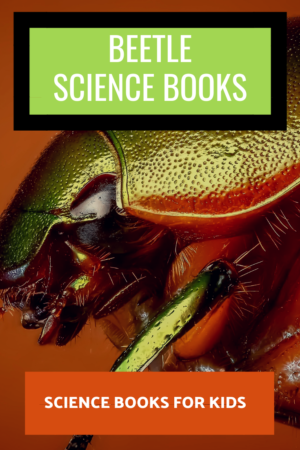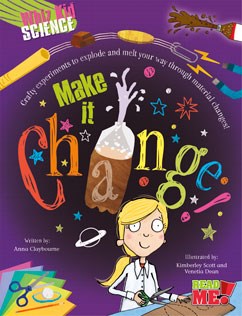Bird watching is a popular hobby and a great way to introduce children to science and nature.
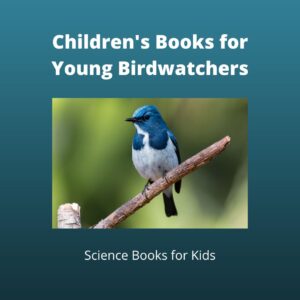
The linked titles go to Amazon. Please see the disclosure below.
Board Books


Baby’s First Book of Birds & Colors by Phyllis Limbacher Tildes
Cleverly allows youngsters to learn their birds and colors at the same time.
Grade Level: Preschool and up
Publisher: Charlesbridge; Brdbk edition (May 2, 2017)
ISBN-10: 1580897428
ISBN-13: 978-1580897426


Bring On the Birds by Susan Stockdale
by Susan Stockdale
This brightly colored board book explores 21 species of birds from around the world.
Reading level: Ages 4 and up
Publisher: Peachtree Publishers (February 1, 2011)
ISBN-10: 1561455601
ISBN-13: 978-1561455607
Beginning/Emerging Readers


Who Is Singing? by Janet Halfmann and illustrated by Chrissy Chabot
Learn the sounds made by twelve common birds, from cardinals to robins in a fun Q and A format.
For each bird, the first page asks who is making the particular sound?

The answer is on the next page.
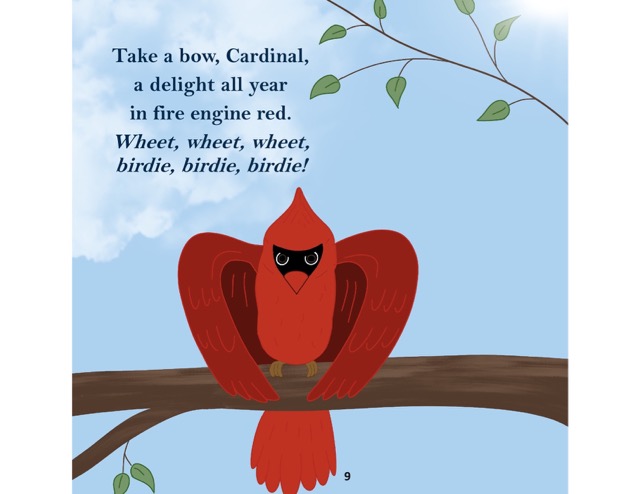
The format “Take a bow (name)” and the words for the songs repeat for each bird species. This is important because repetition helps young readers figure out letters and words, eventually helping them learn to read fluently.
Visit Wrapped in Foil blog for a list of activity suggestions.
Ages: 3-6
Publisher : Pen It! Publications, LLC (July 21, 2021)
ISBN-10 : 1954868375
ISBN-13 : 978-1954868373


National Geographic Little Kids First Big Book of Birds by Catherine D. Hughes
Illustrated with gorgeous photographs, this book introduces young readers to birds both common and not so common.
Age Range: 4 – 8 years
Publisher: National Geographic Children’s Books (July 12, 2016)
ISBN-10: 1426324324
ISBN-13: 978-1426324321

Great Horned Owls by Melissa Hill and Gail Saunders-Smith, PhD (Consultant Editor) is part of a new series that feature common species of owls. Early readers explore where owls live, what they eat, and their life cycle, while learning new vocabulary words. Did you know that owls do not build their own nests?
by Melissa Hill and Gail Saunders-Smith, PhD (Consultant Editor) is part of a new series that feature common species of owls. Early readers explore where owls live, what they eat, and their life cycle, while learning new vocabulary words. Did you know that owls do not build their own nests?
Age Range: 4 – 8 years
Grade Level: Kindergarten – 1
Publisher: Capstone Press (August 1, 2015)
ISBN-10: 1491460539
ISBN-13: 978-1491460535


Burrowing Owls by Melissa Hill and Gail Saunders-Smith, PhD (Consultant Editor) is another title from the new Owls series. Burrowing owls are small owls that live in tunnels in the ground. They are commonly found in the desert.
Age Range: 4 – 8 years
Publisher: Capstone Press (August 1, 2015)
ISBN-10: 1491460466
ISBN-13: 978-1491460467


Peregrine Falcons  by Melissa Hill and Gail Saunders-Smith, PhD, Consultant Editor
by Melissa Hill and Gail Saunders-Smith, PhD, Consultant Editor
Did you know that peregrine falcons are the fastest animals on the planet? They can reach speeds of over 200 mph when diving. They are found throughout the world, except at temperature extremes (hot tropics and coldest polar regions). Learn more about these incredibly fascinating birds with informational titles in the Birds of Prey series for beginning readers.
Age Range: 4 – 8 years
Publisher: Capstone Press (February 1, 2015)
ISBN-10: 1491423102
ISBN-13: 978-1491423103


Can You Find These Birds? (All about Nature) by Carmen Bredeson and Lindsey Cousins
by Carmen Bredeson and Lindsey Cousins
This guide to birds for the beginner reader features a controlled vocabulary and short sentences, but still manages to pack in a lot of information about birds. Check out the preview at the Enslow website.
Reading Level: Ages 3-6
Paperback: 24 pages
Publisher: Enslow Elementary (July 1, 2012)
ISBN-10: 1464400725
ISBN-13: 978-1464400728


Why Do Owls and Other Birds Have Feathers? (Animal Body Coverings) by Holly Beaumont is new title that explains how owls and other birds use their feathers to keep warm and to fly, among other things.
by Holly Beaumont is new title that explains how owls and other birds use their feathers to keep warm and to fly, among other things.
Age Range: 5 – 7 years
Publisher: Heinemann (August 1, 2015)
ISBN-10: 1484625382
ISBN-13: 978-1484625385
Picture Books


In the first part of Swoop and Soar: How Science Rescued Two Osprey Orphans and Found Them A New Family In The Wild by Deborah Lee Rose and Jane Veltkamp, we hold our breaths following the perilous journey of two newly-hatched osprey chicks. One night a storm destroys Swoop and Soar’s nest and the chicks fall to the ground. Nearby, another osprey family has lost their offspring, but still come back to their nest. With a little help from Jane, will the new family adopt the homeless chicks?
What comes after is not so much back matter as a second fascinating book about ospreys and how biologist Jane Veltkamp works hard to rescue them.
With Swoop and Soar, get hooked by the nail-biting story of the chicks, then stick around for some amazing information. Highly recommended!
Reading age : 5 – 13 years
Publisher : Persnickety Press (September 5, 2022)
ISBN-10 : 1943978565
ISBN-13 : 978-1943978564


Whooo Knew? The Truth About Owls by Annette Whipple
Featuring gorgeous color photographs with text in a question and answer format, this book engages readers. You will find out what owl’s eat, how they hunt, whether they sleep during the day, where they live, and what’s up with owl pellets. My favorite questions was whether owls can spin their heads around. Do you know the answer?
The back matter is extensive. There’s a section on how to help owls, explanation of owl anatomy, owl pellet dissection discussion, and a glossary.
Whooo Knew? The Truth About Owls is nonfiction at its best. It will obviously appeal to young birdwatchers and nature lovers, but also to anyone interested in the world around them. Reading it will make you wiser <wink>.
Reading ages : 6 – 10 years
Publisher : Reycraft Books (September 30, 2020)
ISBN-13 : 978-1478869627
ISBN-10 : 1478869623


Secrets of the Loon by Laura Purdie Salas and Charles Dayton
Loons are water birds that live in lakes in northern North America in the summer where they dive under the water to catch fish and other small swimming animals. They are known for their haunting calls that travel great distances over the water, and for their striking black and white plumage.
Secrets of the Loon is a must-read for budding ornithologists, especially ones who live near lakes where loons swim. It is also a treat for the rest of us who wish we could visit a cold lake and listen to these fascinating birds. Dive into the book today!
Age Range: 3 – 7 years
Publisher: Minnesota Historical Society Press (April 28, 2020)
ISBN-10: 1681341581
ISBN-13: 978-1681341583


The Big Book of Birds by Yuval Zommer
The big size and the complex, engaging illustrations give the reader much to discover. There’s also a challenge to find an egg illustration 15 times throughout the book, just the sort of thing that can bring a young reader back to a book again and again.
The text is interesting and informative. The overviews, such as a spread about bird migration, mix well with zoomed-in discussions of specific types of birds, such as parrots or owls.
The Big Book of Birds is the type of book that begs to be shared. Grab a copy, find a quiet corner, and spend time with a young reader delving into each and every page. They will be glad you did.
Age Range: 6 – 8 years
Publisher: Thames & Hudson; 1 edition (June 4, 2019)
ISBN-10: 0500651515
ISBN-13: 978-0500651513


On Gull Beach by Jane Yolen and illustrated by Bob Marstall follows a young boy as he explores a Massachusetts beach. Along the way, he spots a sea star. Before he can reach it, however, a seagull picks it up and flies away. Find out what he discovers as he chases the gull along the beach.
Jane Yolen’s simple, but expertly-crafted rhyming text and Bob Marstall’s exceptional illustrations make a delightful combination. Plus, you can’t go wrong with a bird book published by the Cornell Laboratory of Ornithology.
It is a beautiful picture book!
Age Range: 4 – 11 years
Publisher: Cornell Lab Publishing Group (March 27, 2018)
ISBN-10: 1943645183
ISBN-13: 978-1943645183
Two earlier titles in the On Bird Hill and Beyond series:

 In On Bird Hill (2016) by Jane Yolen and illustrated by Bob Marstall, a boy and his dog find the bird in a nest on a hill.
In On Bird Hill (2016) by Jane Yolen and illustrated by Bob Marstall, a boy and his dog find the bird in a nest on a hill.

 On Duck Pond (2017) by Jane Yolen and illustrated by Bob Marstall follows the same boy and his dog as they visit a serene pond that is filled with birds, frogs, turtles and other creatures. Their arrival causes quite a stir.
On Duck Pond (2017) by Jane Yolen and illustrated by Bob Marstall follows the same boy and his dog as they visit a serene pond that is filled with birds, frogs, turtles and other creatures. Their arrival causes quite a stir.


Woodpecker Wham! by April Pulley Sayre and illustrated by Steve Jenkins
by April Pulley Sayre and illustrated by Steve Jenkins
What better way to learn about woodpeckers then via Sayre staccato-burst prose? Six pages of back matter richly supplement the verb-laden text. Steve Jenkins’ cut and torn-paper collage illustrations aren’t too shabby, either.
Age Range: 4 – 8 years
Publisher: Henry Holt and Co. (May 12, 2015)
ISBN-10: 0805088423
ISBN-13: 978-0805088427


The Wolf-Birds by Willow Dawson
by Willow Dawson
Why are ravens called wolf-birds? Dawson reveals there is a complex relationship between ravens and gray wolves, particularly in areas with cold, harsh winters. Note: a book about predators necessarily shows the death of a few animals, but it is tastefully done.
Overall, The Wolf-Birds is perfect for young readers interested in science and nature, particularly animals. It is also likely to appeal to those readers who think they prefer fiction. It is one of those versatile books to pull it out for units on birds, winter, animal behavior, and even art.
Longer review at Wrapped in Foil
Age Range: 5 – 8 years
Publisher: Owlkids Books (September 15, 2015)
ISBN-10: 1771470542
ISBN-13: 978-1771470544


On the Wing by David Elliott and illustrated by Becca Stadtlander
by David Elliott and illustrated by Becca Stadtlander
Head over to the poetry section to find this beautiful picture book. Each poem is sure to inspire readers to want to find out more about the fascinating birds inside.
Age Range: 3 – 7 years
Publisher: Candlewick (September 9, 2014)
ISBN-10: 0763653241
ISBN-13: 978-0763653248


Feathers: Not Just for Flying by Melissa Stewart and illustrated by Sarah S. Brannen
by Melissa Stewart and illustrated by Sarah S. Brannen
What is there to learn about bird feathers? It turns out there is a wealth of information. You might already be familiar with how feathers help birds fly or how they keep water birds dry, but Melissa Stewart has found at least 16 different ways birds use their feathers. To make it easy for children to relate to and remember, she compares the uses to common human-made objects with similar purposes, like sunscreen and jewelry.
The text with dual-layer format, with the easy-to-read main text in a large font, and sidebars on each page to fill in the informational details. The watercolor illustrations look like you should be able to pluck them from the page. Nature lovers are going to want this for the illustrations alone.
Look for a complete review and activities to extend the book at Growing with Science blog.
Age Range: 6 – 9 years
Grade Level: 1 – 4
Publisher: Charlesbridge (February 25, 2014)
ISBN-10: 1580894305
ISBN-13: 978-1580894302


Parrots Over Puerto Rico by Susan L. Roth and Cindy Trumbore and illustrated by Susan L. Roth is a lovely new picture book. What catches your eye right away are the mixed-media collage parrots on the cover. What holds your attention is the fascinating story of the history of the Puerto Rican parrot, tied in a unique way with the history of the island of Puerto Rico.
by Susan L. Roth and Cindy Trumbore and illustrated by Susan L. Roth is a lovely new picture book. What catches your eye right away are the mixed-media collage parrots on the cover. What holds your attention is the fascinating story of the history of the Puerto Rican parrot, tied in a unique way with the history of the island of Puerto Rico.
You need to have this book on hand because it can be used in so many ways. Obviously it is perfect to accompany art lessons on collage in an art class. Pick it up for units on birds in science class, or for discussions of environmental issues and conservation. It also has an important place in units on U. S. history, because the history of Puerto Rico is also covered in detail. Add darling parrots and an ongoing drama of whether they are going to survive, and it is a real winner.
Ages 6 to 11
Publisher: Lee & Low Books (September 15, 2013)
ISBN-10: 1620140047
ISBN-13: 978-1620140048


Bird Talk: What Birds Are Saying and Why by Lita Judge
by Lita Judge
Birds make a lot of different sounds and you may have wondered what they are saying. This lovely picture book will give you an introduction to bird communication. The illustrations are amazing. Note: Some of the calls are about attracting mates, and Judge does not shy away from this topic.
Reading level: Ages 6 and up
Hardcover: 48 pages
Publisher: Flash Point (March 13, 2012)
ISBN-10: 1596436468
ISBN-13: 978-159643646


Birds of a Feather  by Bernadette Gervais and Francesco Pittau
by Bernadette Gervais and Francesco Pittau
All about birds with more than 40 lift-the-flaps and pop-ups. Harder to find now, but worth the search.
Hardcover: 18 pages
Publisher: Chronicle Books; Pop edition (September 26, 2012)
ISBN-10: 1452110662
ISBN-13: 978-1452110660


For the Birds: The Life of Roger Tory Peterson
by Peggy Thomas and illustrated by Laura Jacques
Inspiring biography of naturalist Roger Tory Peterson, of Peterson Field Guides fame.
Reading level: Ages 8 and up
Hardcover: 48 pages
Publisher: Boyds Mills Press (October 1, 2011)
ISBN-10: 1590787641
ISBN-13: 978-1590787649


Moonbird: A Year on the Wind with the Great Survivor B95
by Phillip Hoose
The Moonbird is a tiny bird who has flown an estimated 350,000 miles – over the distance to the moon and halfway back – in his lifetime! Pair with bird-related citizen science projects that are child friendly, such as the Great Backyard Bird Count.
Reading level: Ages 10 and up
Hardcover: 160 pages
Publisher: Farrar, Straus and Giroux (BYR) (July 17, 2012)
ISBN-10: 0374304688
ISBN-13: 978-0374304683
My review


Alex the Parrot: No Ordinary Bird: A True Story by Stephanie Spinner
by Stephanie Spinner
The title character of this book is an African gray parrot named Avian Learning Experiment. It turns out that Alex lives up to his clever name. His owner finds out that birds are capable of much more complex behavior than originally thought.
Reading level: Ages 8 and up
Hardcover: 48 pages
Publisher: Knopf Books for Young Readers (October 9, 2012)
ISBN-10: 0375868461
ISBN-13: 978-0375868467
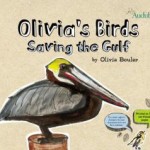
Olivia’s Birds: Saving the Gulf
by Olivia Bouler
Written by Olivia when she was eleven, this book shows children what they can accomplish if they put their mind to it. See an interview with Olivia at Archimedes Notebook.
Reading level: Ages 3 and up
Hardcover: 32 pages
Publisher: Sterling; First Edition (April 5, 2011)
ISBN-10: 1402786654
ISBN-13: 978-1402786655
Bird Books with Hands-on Activities Included

Bird-acious (Science with Stuff) by Melissa Stewart.
First of all, the book itself is a fun and educational introduction to birds for young readers. It contains big color photographs and interesting facts. It covers everything from feathers and flying to beaks and eating. There’s even a two-page spread that features photographs of cool bird tongues and describes what the various structures are used for.
But this book offers even more. In the cover image above, do you see the brown mass in the yellow oval to the right, just under the title? That is an actual owl pellet for kids to dissect. A bird book with its own hands-on activity included, how cool is that?
Age Range: 8 and up
Hardcover: 48 pages
Publisher: Downtown Bookworks; Nov edition (December 10, 2013)
ISBN-10: 1935703900
ISBN-13: 978-1935703907

Look and Learn Birds (PBS Kids) by Sarah Parvis and PBS KIDS (Editor)
 Perfect to accompany a citizen science project like The Great Backyard Bird Watch, this kit comes with a 64-page book, simple-to-use binoculars, a laminated identification sheet with pictures of common birds, and an activity poster. What a great way to encourage the next generation of bird watchers.
Perfect to accompany a citizen science project like The Great Backyard Bird Watch, this kit comes with a 64-page book, simple-to-use binoculars, a laminated identification sheet with pictures of common birds, and an activity poster. What a great way to encourage the next generation of bird watchers.
Age Range: 4 – 8 years
Publisher: Downtown Bookworks; Box Pck Pa edition (August 30, 2016)
ISBN-10: 1941367291
ISBN-13: 978-1941367292
Middle Grade


Woodpeckers: Drilling Holes and Bagging Bugs by Sneed B. Collard III.
If you’ve never read a book by acclaimed science author Sneed B. Collard III, reading Woodpeckers will send you searching for more of his titles. First of all, he and his son (at fourteen years old!) traveled around North America and took the majority of the stunning color photographs in the book. That alone shows their knowledge about and passion for their subjects. Add the fun, conversational tone of the text, sprinkled with quotes from woodpecker experts and you have one amazing book!
Good for Middle Grade ages on up.
(Check out Fire Birds below, by the same author)
Ages: 9-12
Publisher: Bucking Horse Books (April 1, 2018)
ISBN-10: 0984446095
ISBN-13: 978-0984446094


Look Up!: Bird-Watching in Your Own Backyard by Annette LeBlanc
by Annette LeBlanc
In an attempt to overcome the “whatever” attitude of the modern child, LeBlanc adopts a conversational style and cartoon illustrations that are sure to attract some new interest in giving birdwatching a try.
Reading level: Ages 8 and up
Hardcover: 64 pages
Publisher: Candlewick (March 12, 2013)
ISBN-10: 0763645613
ISBN-13: 978-0763645618
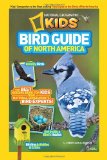
National Geographic Kids Bird Guide of North America: The Best Birding Book for Kids from National Geographic’s Bird Experts by Jonathan Alderfer
by Jonathan Alderfer
It may seem like hype to call yourself the best, but this book really does takes kid-friendly bird guides to a whole new level. The book features National Geographic quality photographs and artwork. Plus, it wouldn’t be National Geographic with really nice maps of where many of the birds are found (sneak in a geography lesson here?) Now add a lot of good tips for identification and easily-digestible facts about the different birds. Stir in a few bird-related activities, and you have a fantastic bird guide for kids.
Age Range: 7 – 9 years
Paperback: 176 pages
Publisher: National Geographic Children’s Books (March 12, 2013)
ISBN-10: 1426310943
ISBN-13: 978-1426310942


Older children will enjoy reading about Fire Birds by Sneed B. Collard III.
by Sneed B. Collard III.
Fire Birds reveals the work of biology professor Dick Hutto, who has been investigating what happens to bird species after a forest fire. He found that some kinds of birds increase in number due to increased nest sites and food. He has come up with a list of 15 species that are closely associated with recently burned forests, which he calls “Fire Birds.” Can you guess what they might be?
(This title was previously reviewed at Wrapped in Foil.)
Ages: 8+
Hardcover: 48 pages
Publisher: Bucking Horse Books (December 10, 2014)
ISBN-10: 0984446079
ISBN-13: 978-0984446070
Crow Smarts: Inside the Brain of the World’s Brightest Bird by Pamela S. Turner and photographs by Andy Comins

 Written with light humor (one of the crows is named “Crow we never got around to naming”) and illustrated with birds-eye-view photographs (like the one on the cover). Whether you have read all of books in the Scientists in the Field series or none of them, you are going to want to pick up this one. Perfect for anyone interested in learning, tool use and birds, including budding animal behaviorists, ornithologists, psychologists and educators.
Written with light humor (one of the crows is named “Crow we never got around to naming”) and illustrated with birds-eye-view photographs (like the one on the cover). Whether you have read all of books in the Scientists in the Field series or none of them, you are going to want to pick up this one. Perfect for anyone interested in learning, tool use and birds, including budding animal behaviorists, ornithologists, psychologists and educators.
Full review at Growing With Science.
Age Range: 10 – 12 years
Publisher: HMH Books for Young Readers (August 2, 2016)
ISBN-10: 0544416198
ISBN-13: 978-0544416192


Birdology: 30 Activities and Observations for Exploring the World of Birds (Young Naturalists) by Monica Russo and with photographs by Kevin Byron
by Monica Russo and with photographs by Kevin Byron
Birdology gives an introduction to many aspects of bird biology, such as their anatomy and special characteristics, where to look for them, what they eat, bird migratory behavior, etc. In the final section it explores common careers that involve working with birds. Each section reveals information about a topic, such as feathers, and then provides suggestions for hands-on activities to reinforce learning.
The author is very careful to point out that it is illegal to collect or possess feathers, nests or eggs of wild birds. All the activity suggestions keep this important consideration in mind.
(Full review and activities at Growing with Science blog)
Age Range: 7 and up
Publisher: Chicago Review Press (January 1, 2015)
ISBN-10: 161374949X
ISBN-13: 978-1613749494
Be sure to check our recent list of children’s books about bird migrations, too.
Do you have a book to add to this list? We’d love to hear from you.
_____________________________________
Disclosure: I am an affiliate with Amazon so I can provide you with cover images and links to more information about books and products. As you probably are aware, if you click through the highlighted title link and purchase a product, I will receive a very small commission, at not extra cost to you. Any proceeds help defray the costs of hosting and maintaining this website.
Along with some fun facts, this book also starts and ends with a list of reasons ladybugs are important in nature. Part of the Rookie Read-About Science series.
Illustrated with colorful stock photographs, the text features controlled vocabulary and bold glossary words, plus short sentences perfect for beginning readers. A brief introduction to the wonderful world of beetles.
Although named ladybugs, these insects are really beetles. Young readers learn about the lady beetle life cycle. Watercolor illustrations by the author.
The beetle installment from this long-running author/illustrator collaboration is as lovely and beautifully written as the others in the series.
by Judy Allen and illustrated by Tudor Humphries
Another picture book in the Are you a… series that brings young readers into the book by making direct comparisons from humans to insects. These quality books are fun and full of age-appropriate information.
by Gail Gibbons
Gail Gibbons knows what questions kids ask, and she provides the answers in a clear and concise way. Illustrated by the author.
by Laura Purdie Salas and illustrated by Jeff Yesh
Mealworms are grown for pet food and used as bait, but raising them is also a common science project. Learn more about insect metamorphosis by studying the life cycle of this beetle.
by Loree Griffin Burns and illustrated by Ellen Harasimowicz
Asian longhorned beetles, Anoplophora glabripennis, were first noticed in 1996 in New York City. Because the beetles don’t move far from their emergence site, officials decided the best policy is to destroy all infested trees by cutting them down and chipping them in an effort to eradicate the insects. In her Author’s Note, Loree Griffin Burns admits that she questioned whether attempting to eradicate the beetles was going to be a successful tactic. In an effort to find out more, she gathered the materials that would eventually become the book.
by Jean C. Echols is a great resource for educators.

